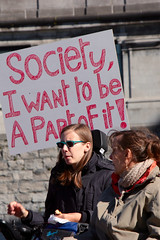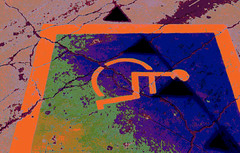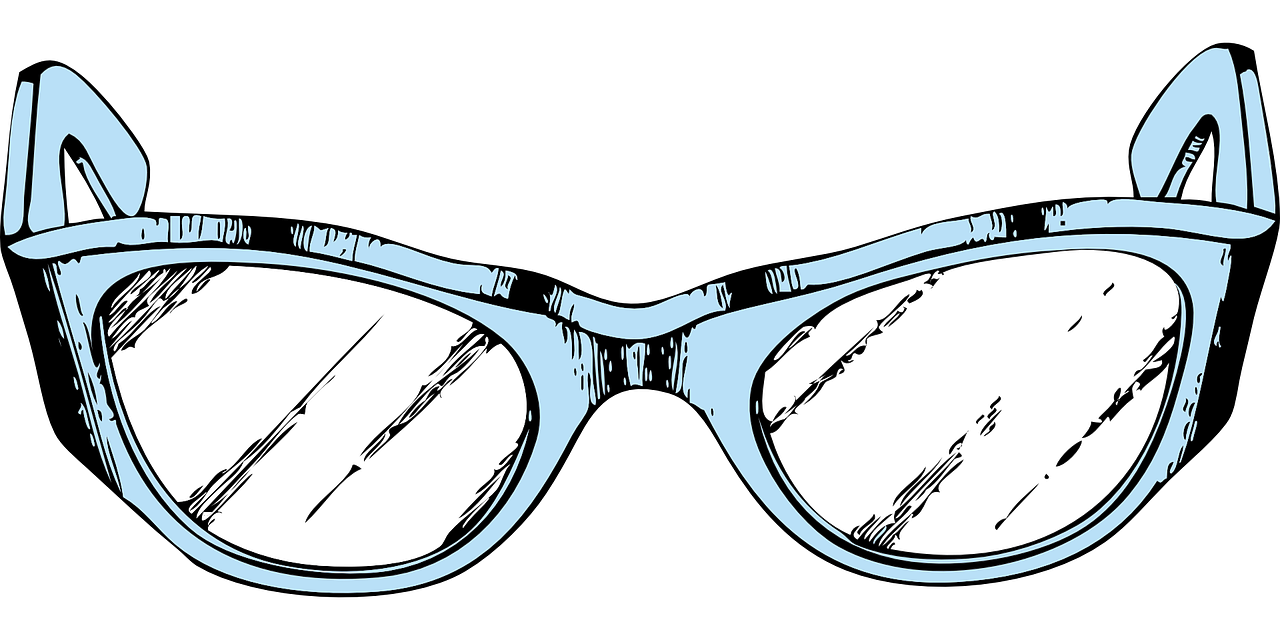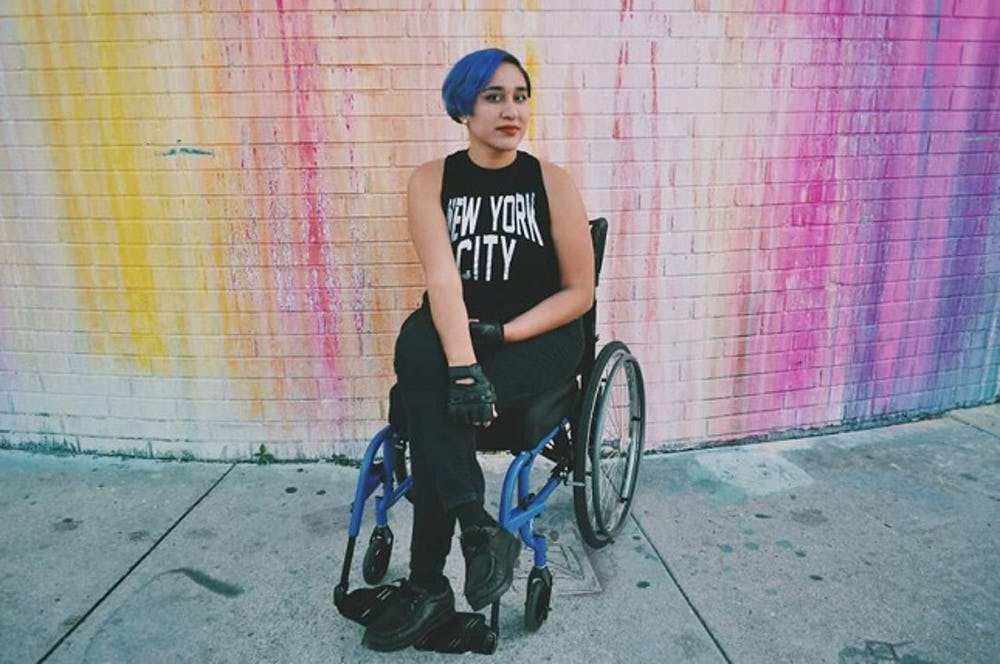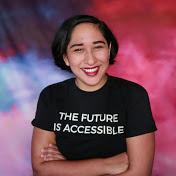Americans with Disabilities - a CRT Unit
Americans with Disabilities
A CRT Unit For Secondary English Classes
Teacher Guide for Hands-on Activity:
Seeing the World through a Different Lens
Contributed by: K-12 Outreach Office, Worcester Polytechnic Institute
Source: This is a modified lesson from OER Commons.
https://www.oercommons.org/courses/seeing-the-world-through-a-different-lens-2/view
Intended Grades: 9-12
Time: (2-3) 50 minute class periods
Social Justice Standards -ACTION
- Students will express comfort with people who are both similar to and different from them and engage respectfully with all people.
- Students will develop language and knowledge to accurately and respectfully describe how people (including themselves) are both similar to and different from each other and others in their identity groups.
- Students will respectfully express curiosity about the history and lived experiences of others and will exchange ideas and beliefs in an open-minded way.
- Students will respond to diversity by building empathy, respect, understanding and connection.
- Students will examine diversity in social, cultural, political and historical contexts rather than in ways that are superficial or oversimplified.
Core SEL Competencies - SOCIAL AWARENESS
The ability to take the perspective of and empathize with others, including those from diverse backgrounds and cultures. The ability to understand social and ethical norms for behavior and to recognize family, school, and community resources and supports.
- Perspective-taking
- Empathy
- Appreciating diversity
- Respect for others
Common Core Standards -
COMPREHENSION & COLLABORATION:
CCSS.ELA-LITERACY.SL.9-10.1
Initiate and participate effectively in a range of collaborative discussions
(one-on-one, in groups, and teacher-led) with diverse partners on grades 9-10
topics, texts, and issues, building on others' ideas and expressing their own
clearly and persuasively.
2. CCSS.ELA-LITERACY.SL.9-10.2
Integrate multiple sources of information presented in diverse media or formats
(e.g., visually, quantitatively, orally) evaluating the credibility and accuracy of
each source.
3. CCSS.ELA-LITERACY.SL.9-10.3
Evaluate a speaker's point of view, reasoning, and use of evidence and rhetoric,
identifying any fallacious reasoning or exaggerated or distorted evidence.
Summary
Students participate in a variety of activities modeling different disabilities. They gain a better understanding of physical limitations while performing tasks at workstations without the use of their thumbs (taped down), impaired vision (various glasses) and impaired cognitive ability (using computers and headphones). Students will then reflect on the activities.
Learning Objectives
After this activity students should be able to:
- understand what the ADA is and its historical significance.
- gain empathy for the struggles that people with disabilities face.
- reflect on their past experiences and become more aware of the experiences of others.
- collaborate and participate in discussions and formulate their own perspective.
Materials List
- penny
- tape
- shirt / coat with buttons
- 3 pairs of eyeglasses (old, unwanted pairs are best)
- picture for puzzle (see instructions in Procedure section)
- large suitcase
- large books that can be dropped
- stopwatch
- crutches (2-5 sets of various sizes)
- Headphones - 1 for each group member
- laptops/chromebooks/computers - 1 for each group member
- Sterile wipes
- Paper and pens
- Novels at reading level
Worksheets and Attachments
Implicit Bias Reflective Questions
Procedure
Set up 3 workstations in the classroom to allow students to explore some of the difficulties faced by individuals with disabilities. Depending on time availability, either have each student work at only one station, or have each student visit several or all workstations. If rotating, allow ~10 minutes at each station.
Before the Activity
- Prepare vision impairment glasses: Using a pair of plastic wrap-around glasses, use a piece of sandpaper to roughen the glasses to various degrees. Label them A, B or
but do NOT include information on the level of impairment in the labels
worksheets; leave that for students to figure out as part of the activity. A =
moderately impaired, B = mildly impaired, C = severely impaired. Alternatively,
tape layers of scotch tape over the glasses lenses to make them hard to see through.
- Note: Two different activities on the vision impaired worksheet have been included; one version is for one pair of glasses and the other version is for multiple pairs.
- Make the puzzle: Using a picture of a familiar person or place and a paper cutter, create the jigsaw puzzle. First, cut the picture so its overall dimensions are 6 inches (15.2 cm) by 9 inches (22.8 cm). Next, cut this same picture into nine equal rectangles, each measuring 2 inches (5.1 cm) by 3 inches (7.6 cm). Use the paper cutter to make these rectangles as uniform as possible. Shuffle the puzzle pieces and place in an envelope.
- Gather materials and make copies of the student worksheets.
- Create a recording of random noises spaced 5-10 seconds apart. The recording should last for 10 minutes.
Set up Workstations
- At the loss of opposable thumb, place pennies, and shirts/jackets with buttons.
- At the vision impairment station, use a towel, large box, or cloth to cover the items students will be trying to see. Alternatively, place the items face down on the table.
- At the headphones station, plug in the headphones to a computer with a recording of various noises spaced 5-10 seconds apart. Have sterile wipes available.
With the Students
Tell students they are about to participate in a series of activities that will give them a glimpse into the difficulties people with disabilities face throughout their days. Divide them into groups. Introduce them to the workstations (listed below), explaining the activities and worksheets with follow-up questions.
- Complete the ADA research activity. Students will record answers on their worksheet.
- Have class form a circle for the discussion. Explain the rules for restorative circles. (*see below)
- Discuss the realities they face, and explain this is not a laughing matter. This is only a glimpse into the world of someone with a disability..
- Demonstrate taping down a student's thumb to model the loss of opposable thumb. Ask students to put on the gloves such that the thumb is not inserted into the glove. Then, tape down the thumb to disable its movement. Then pick up a penny, button a jacket, and tie a shoe.
- Represent moderately or severely diminished eyesight. Have a student with the impairment glasses read from different school books and posters in the room. Have them try to put together a puzzle.
- Explain at the headphones station, they are doing the tasks individually.
Assessment
Pre-Activity Assessment
- Students complete “Activity 1” in their group using computers.
- Students merge into one large circle with their responses.
- Teacher leads discussion on ADA rules and the purpose of the activity.
Activity Embedded Assessment
Activity Worksheets: Have students complete the rest of the “Student Answer Packet,” which provide workstation task instructions, guidance for data and observation gathering, and questions. Review their answers to gauge their comprehension of the subject.
Post-Assessment
Students answer the questions on the Implicit Bias Reflective Questions.
Safety Issues
- Students working at the impaired eyesight workstation should not leave their seats until they have taken off the glasses.
- At the opposable thumb station, make sure students do not tape their thumbs to their palms directly. Ask them to use the gloves before taping their thumbs, to prevent any injury while removing the tape.
- Students need to use sterile wipes at the headphones station.
Troubleshooting Tips
- For the opposable thumb station, the procedure that worked best was to have a student insert all four fingers into the gloves (not the thumb) and then put tape on to prevent thumb movement.
- Take special care when introducing students to these workstation experiences. Ask them to consider friends or family with physical difficulties, reflecting on appropriate, respectful behavior regarding disabilities.
- You may wish to invite a disabled individual to speak to the class about his or her disability and everyday experiences.
Copyright
© 2005 by Regents of the University of Colorado; original © 2005 Worcester Polytechnic Institute
Seeing the World through a Different Lens:
Student Answer Packet
Name: _______________________
Period: _______________
Seeing the World through a Different Lens:
Student Answer Packet
Contributed by: K-12 Outreach Office, Worcester Polytechnic Institute
Source: This is a modified lesson from OER Commons.
Link: https://www.oercommons.org/courses/seeing-the-world-through-a-different-lens-2/view
Activity 1: Pre-activity Research
In a group of 2-3 students, research the following question. Be prepared to share your answers with the class.
Question: Research the Americans with Disabilities Act. Explain what it is and when it was passed. Give three examples of accommodations required by the ADA.
What was life like for people with disabilities before the ADA? Be specific.
______________________________________________________________________
______________________________________________________________________
______________________________________________________________________
What is it, and when was it passed? ______________________________________________________________________
______________________________________________________________________
How did allies and activists of people with disabilities convince the general public and political leaders that this was something we needed to do?
______________________________________________________________________
______________________________________________________________________
______________________________________________________________________
______________________________________________________________________
Three examples of accommodations:
1._____________________________________________________________________
2._____________________________________________________________________
3._____________________________________________________________________
Activity 2:
You will now form a large circle. The teacher will give you instructions. Record 5 notes from the class discussion and answer the Prep Question.
1.______________________________________________________________________
2.______________________________________________________________________
3.______________________________________________________________________
4.______________________________________________________________________
5.______________________________________________________________________
Prep Question:
This activity is intended to be serious. Although you may feel awkward or uncomfortable during the exercises, please understand that this is not a laughing matter. What do you hope to learn from this experience?
________________________________________________________________________
________________________________________________________________________
________________________________________________________________________
Activity 3: Workstations
- Physical Impairment
With the assistance of a classmate, tape your thumbs down against the palms of your
hands. Try to complete the following tasks. Rate the difficulty of each activity.
Not at all difficult Very difficult
Pick up a penny. 1 2 3 4 5
Button a button. 1 2 3 4 5
Tie a shoe. 1 2 3 4 5
Of the above activities what did you find most difficult to do? Explain why.
_____________________________________________________________________
_____________________________________________________________________
_____________________________________________________________________
What did you find least difficult? Explain why.
_____________________________________________________________________
_____________________________________________________________________
_____________________________________________________________________
B. Eyesight impairment:
Put on the vision impairment glasses BEFORE uncovering the items on the table.
The envelope on the table contains a puzzle. Please remove the pieces from the envelope
and try to piece the puzzle together correctly to form a picture.
Rate the difficulty of each of these activities.
Read book 1 2 3 4 5
Read poster 1 2 3 4 5
Put puzzle together. 1 2 3 4 5
Of the above activities what did you find most difficult to do? Explain why.
______________________________________________________________________
______________________________________________________________________
______________________________________________________________________
What did you find least difficult? Explain why.
_____________________________________________________________________
_____________________________________________________________________
_____________________________________________________________________
Before leaving the table, please shuffle the puzzle pieces and return them to the
envelope. Make sure everything is back in its place, and the items are covered / placed
face down.
Eyesight impairment: Multiple glasses
Put on one pair of vision impairment glasses BEFORE uncovering the items on the table.
One at a time, pick up objects and try to read them.
The envelope on the table contains a puzzle. Please remove the pieces from the envelope and try to piece the puzzle together correctly to form a picture.
Rate the difficulty of each activity. Be sure to find the column with a label matching the one on your glasses.
Repeat above procedure for each set of vision impairment glasses.
Impairment glasses: “A” Glasses “B” Glasses “C” Glasses
Read book 1 2 3 4 5 1 2 3 4 5 1 2 3 4 5
Read poster 1 2 3 4 5 1 2 3 4 5 1 2 3 4 5
Put puzzle together. 1 2 3 4 5 1 2 3 4 5 1 2 3 4 5
Of the above activities what did you find most difficult to do? Explain why.
_____________________________________________________________________
_____________________________________________________________________
_____________________________________________________________________
What did you find least difficult? Explain why.
_____________________________________________________________________
_____________________________________________________________________
_____________________________________________________________________
Using the letters on the ______ Mildly impaired vision
glasses, rank the 3 pairs ______ Moderately impaired vision
in order. ______ Severely impaired vision
Before leaving the table, please shuffle the puzzle pieces and return them to the envelope. Make sure everything is back in its place, and the items are covered.
C. Cognitive Impairment
If you need to adjust the volume on the headphones, please do it before beginning the activity. You may use your own headphones, or the headphones at the station.
Use a sterile wipe to clean the headphones after each use.
You will have three minutes for each activity below.
Rate the difficulty of each activity below.
Not difficult Very difficult
Write the direction for making a
PB&J sandwich. 1 2 3 4 5
Read a page from a book silently. 1 2 3 4 5
Memorize a sentence from a book. 1 2 3 4 5
Of the above activities what did you find most difficult to do? Explain why.
_____________________________________________________________________
_____________________________________________________________________
_____________________________________________________________________
What did you find least difficult? Explain why.
_____________________________________________________________________
_____________________________________________________________________
_____________________________________________________________________
Assistive and Adaptive Devices – Post activity Assessment
Reflection Sheet
For each of the disabilities modeled in class, name at least two of your everyday activities that would change significantly or be virtually impossible to participate in.
1. Missing thumbs
A.
B.
2. Impaired eyesight
A.
B.
3. Cognitive impairment
A.
B.
Extra Credit:
1. Choose one of the activities you identified above. What modifications or assistive device
would make you more able to complete this activity?
2. Do you think this modification or assistive device would be easy to obtain?
3. Do you think your solution could be used for other purposes or activities?
If so, what?
If not, why not?
4. Draw an illustration of your adaptive device:
Post-Assessment
Hands-on Activity: Seeing the World through a Different Lens
Implicit Bias Reflective Questions:
Directions: Take a few minutes to think about each question. Then, in your group, discuss your ideas. Pay attention to how your ideas compare and contrast to the other group members. For homework, type your responses in Google Classroom. Read your classmates answers. Write a positive comment in the class comment feed for three separate student responses.
Implicit Bias: We have unconscious beliefs about what is “normal,” and they form our attitudes and perspectives towards particular groups of people. This is not something we do on purpose. These beliefs are formed from past experiences and our environment. When we become mindful and take a look at these beliefs, we can see the ways in which we are prejudicing others. We also can discover the stereotypes we classify people into. As a result, we can expand our perspective and become more aware of the world around us.
- Think about a time when you had to do something challenging that seemed easy for others. (Example: completing math problems, doing a cartwheel, running, reading out loud) Explain the experience. How did you feel while doing it?
- Prior to today’s activity, what assumptions did you have or what did you not realize regarding the challenges that people with disabilities face? (For example, I never considered how challenging it is for people with crutches to carry a cup of water.)
- Disabilities are unique and come in various degrees. This simulation is only a glimpse of the real hurdles people with disabilities face. Write a reflection about this activity as a whole.
Document# 1:
Here’s What YouTuber Annie Elainey Wants You to Know About Being Disabled
Bronwyn Kienapple · September 1, 2017
Annie Segarre was 23 when she began feeling a sharp pain in her feet whenever she walked. Within a year, she was using a wheelchair to get around. At 26, she received a diagnosis of Ehlers-Dahlos syndrome and came to grips with the reality of being a person with a disability.
Now 27, Segarre is known to her thousands of Youtube followers as Annie Elainey, where she’s become a sensation by vlogging about sensitive topics surrounding disability and mental health. She launched the channel to chat about body image and her recovery from an eating disorder, a self-love journey that prepared her for her diagnosis last year. Throughout her quest to unlearn toxic thoughts and develop a healthy and positive appreciation for her body, she’s been documenting every moment on video.
She launched the channel to chat about body image and her recovery from an eating disorder, a self-love journey that prepared her for her diagnosis last year. Throughout her quest to unlearn toxic thoughts and develop a healthy and positive appreciation for her body, she’s been documenting every moment on video.
Just getting to a diagnosis was a trial in itself. Segarre suspected that she likely had EDS a year before her blood test results and subsequent diagnosis, but faced gaslighting from multiple doctors — that is, doctors who weren’t taking her reported symptoms seriously.
“It was such a traumatizing experience and no one should have to go through that while seeking answers about their health conditions,” she says. “Now, there is a good corner of my activism which is EDS awareness; it is not so much a rare disease as it is rarely diagnosed so I want people to be well informed about it.”
And yet Segarre still confronts a lot of misinformation about her disability. It’s the assumptions that get her down: People think she’s sick because she’s not trying hard enough to get well, that she’s faking her illness because her degree of mobility varies day-by-day, that she’s not positive enough and that’s why she’s ill. Which is exactly why she spends a lot of time vlogging about topics like Things I Wish People Knew About Being Disabled and Casual Ableist Language.
One simple way to be an advocate, Segarre advises, is to nix languages that equate disability with anything negative. Words like “r*tard,” “stupid,” and “dumb” makes it seem like having an average intellect makes someone better. Words like “lame” do the same for physical ability, and “crazy” for mental illness.
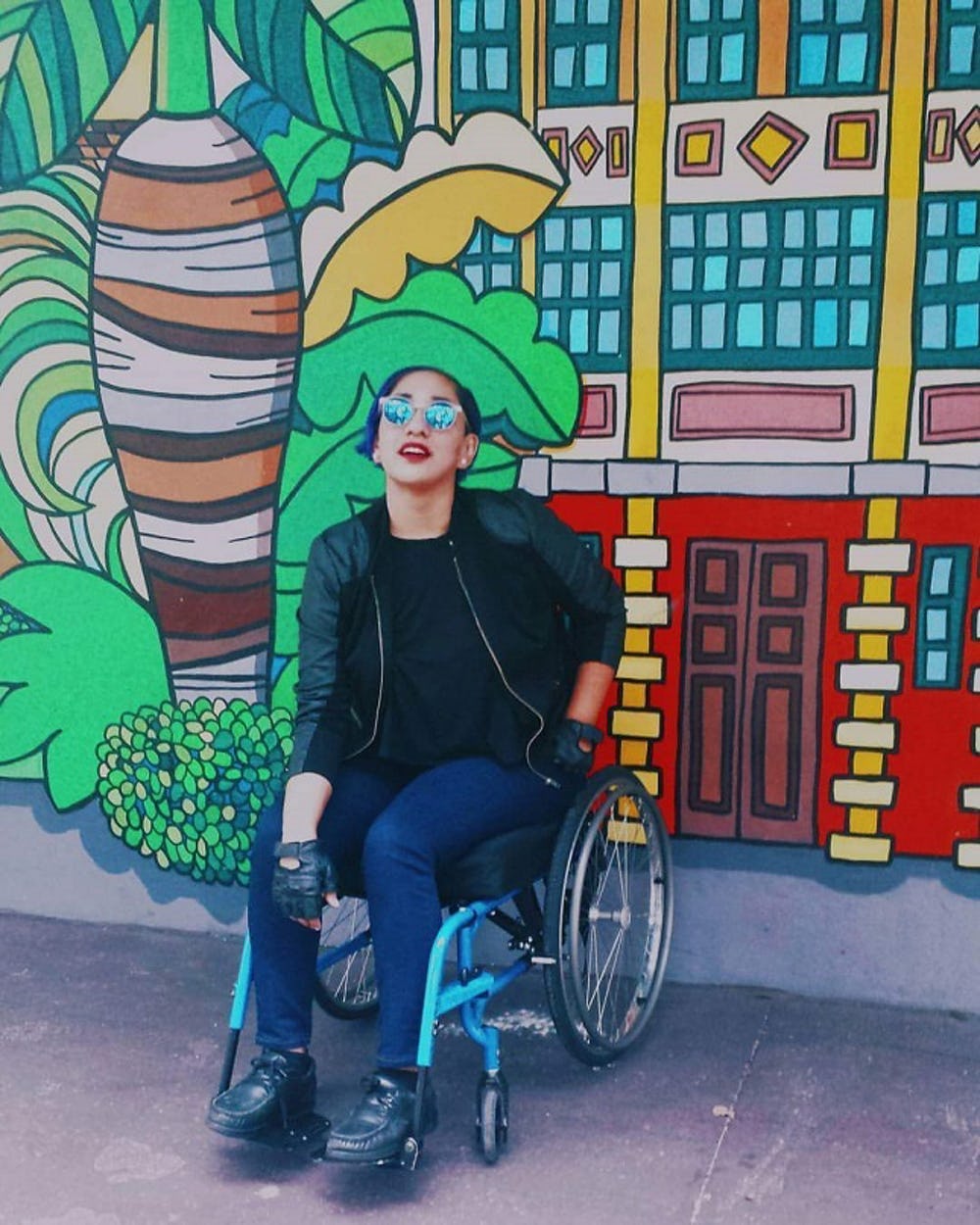
Unfortunately, being a woman with an opinion on the internet is a dangerous occupation these days.
Segarra has gotten plenty of misogynistic comments about her appearance. Vlogging about her dislike of rape jokes and ableist language has made her vulnerable to attacks that she’s suppressing free speech.
How does she cope?
“More often than not I’ll ignore, maybe delete and block because I don’t want needless cruelty. occupying space,” she says. “I don’t delete things that are actually criticisms or respectful disagreements but profanity, name-calling, toxic, and hateful ideologies yes; my life experience has led me to a place where I do not tolerate that kind of abuse.”
In the meantime, Segarra performs self-care by digesting plenty of movies and shows (she recently marathoned Being Human on Netflix) and dreaming about financial independence. She’d love to earn enough to support her family and hire an assistant to help her with the avalanche of messages plus all the editing and organizational work her job requires. The end goal would be to focus on her two on-the-go book projects and collaborate more with people from her community.
For now, she hopes her viewers create more space for people like her: diabled, LGBTQ+, women of color. Segarra asks able-bodied, cis, white women to seek out content created by alternative groups, to share it, to engage with it, to actively unlearn any negative thoughts or language they have.
“Make sure that if you don’t see us around, you make some noise for us,” says Segarra, “Seek our communities, if we weren’t invited in a diverse setting demand to know why not. Demand to know why a particular space wasn’t made accessible for us.”
In other words, she says, “Pass the mic.”
(Photos via Annie Segarra/Instagram)
Source: Kienapple, Bronwyn. “Here's What YouTuber Annie Elainey Wants You to Know About Being
Disabled.” Brit + Co, 1 Sept. 2017,www.brit.co/youtuber-annie-elainey-profile/.
Understanding Key Vocabulary:
| Word: | Definition: | Positive, Negative or Neutral Tone: |
| Gaslighting | ||
| Nix | ||
| Misogynistic | ||
| Albeist | ||
| Ideologies |
Document #2:
Link: Youtube Video Annie Segarre (Elainey)
“Things I wish people knew about being disabled”
Published on Aug 28, 2017
CHANNEL DESCRIPTION
Annie Segarre (Annie Elainey) creates mainly first-person videos on introspective topics, social topics, sharing her experiences and thoughts on disability, body image, LGBT topics, gender equality, etc, as well as creative content; a variety of music/artistic media and short films. Annie identifies as a queer disabled (Ehlers-Danlos Syndrome)
Document# 3:
Ed Roberts, the Disability Rights Movement and the ADA
Link: Ed Roberts Online Exhibit
Directions:
Click on the AAPD’s online exhibit of Ed Roberts. Answer the following questions.
- What is Ableism?
____________________________________________________________________
____________________________________________________________________
- What happened to Ed Roberts in 1952?
____________________________________________________________________
____________________________________________________________________
- By attending Berkley, Ed Roberts made it possible for other disabled students to attend, paving the way for the creation of what?
____________________________________________________________________
____________________________________________________________________
- Who is Judy Heumann? What did she do to help people with disabilities?
____________________________________________________________________
____________________________________________________________________
- What is Section 504 of the 1973 Rehabilitation Act?
____________________________________________________________________
____________________________________________________________________
- What was one of its goals?
____________________________________________________________________
____________________________________________________________________
- Explain how disability rights are civil rights.
____________________________________________________________________
____________________________________________________________________
- What is audism?
____________________________________________________________________
____________________________________________________________________
- What was The ADA Diaries?
____________________________________________________________________
____________________________________________________________________
- The Americans with Disabilities Act prohibits discrimination on the basis of:
____________________________________________________________________
____________________________________________________________________

